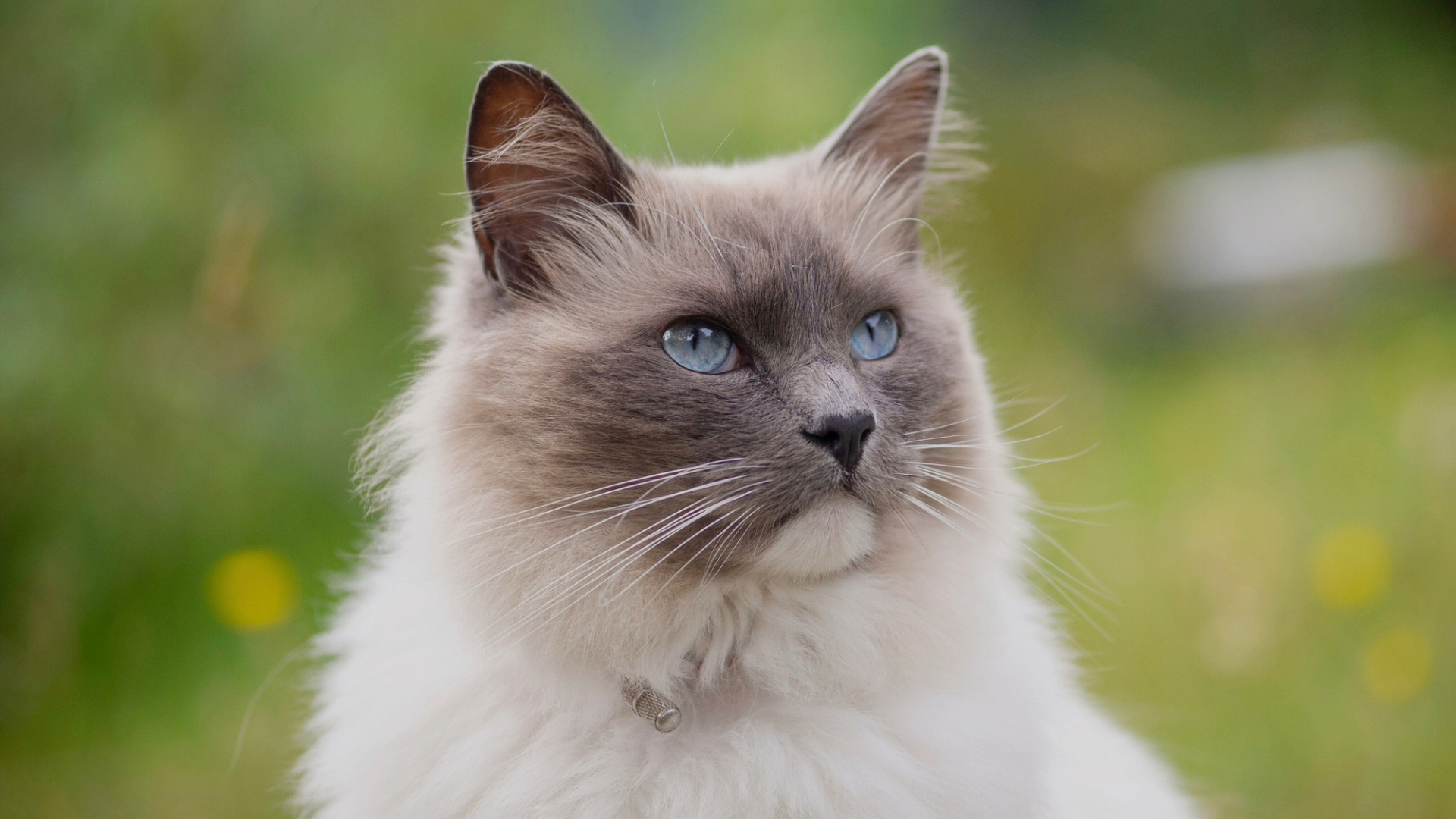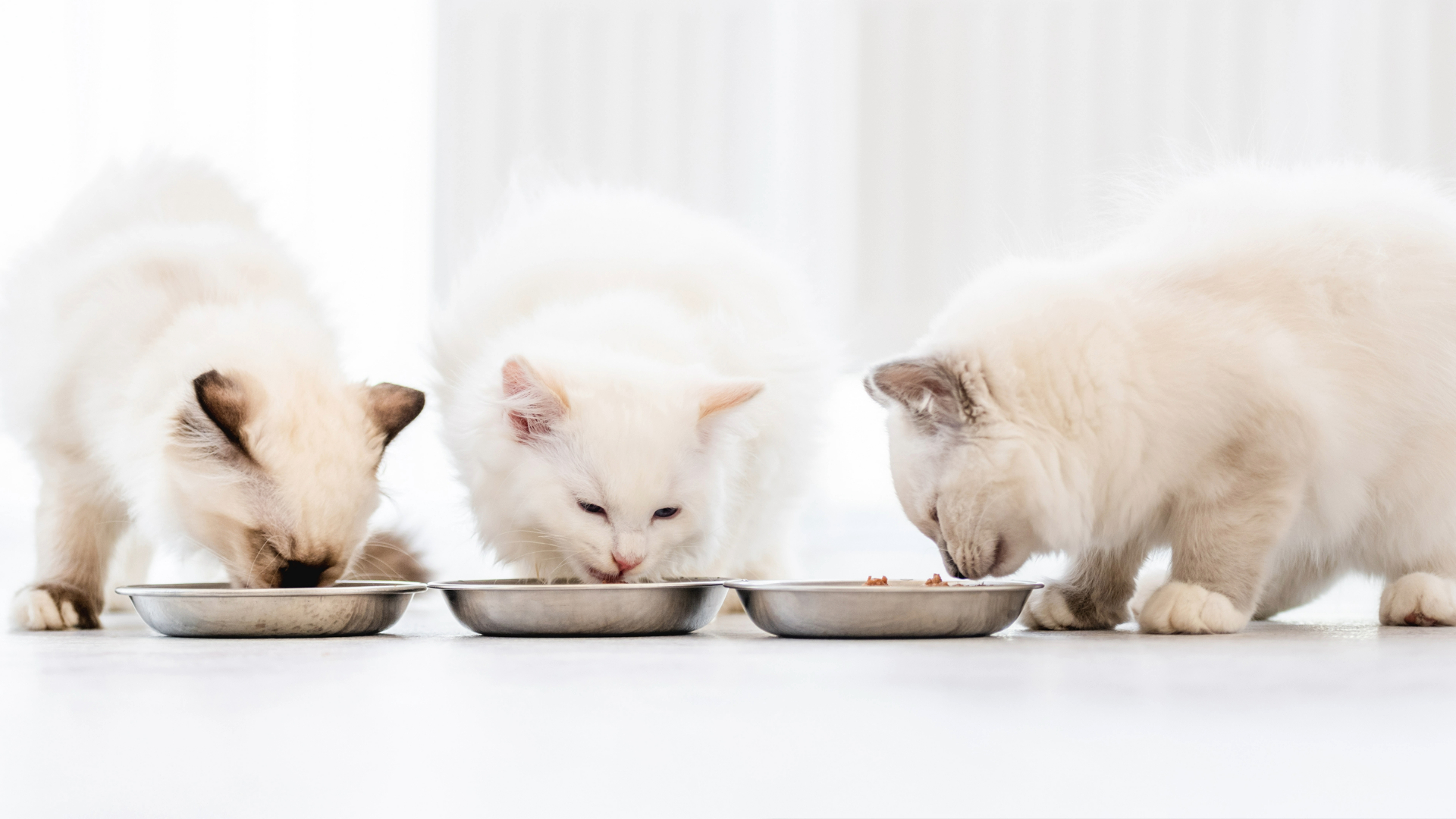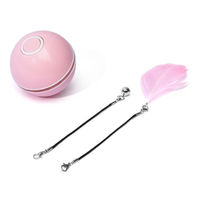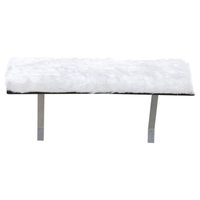
If you’re looking for an affectionate, cuddly cat (sometimes described as dog-like) then a ragdoll cat might be the perfect companion for you. They are well suited to multi-pet households as their calm, laidback nature makes them great for cross-species companionship.
Ragdolls have beautiful point markings and large blue eyes that set them apart from other breeds. They can be color point (one color darkening at their paws, nose, ears, and tail), mitted (the same, but with white paws and a strip of white down their belly), or bicolor. They come in the colors seal, red, and chocolate, and the dilutions of these are blue, lilac, and cream, but all kittens are born white.
Whether you’re looking to pick up a kitten, or an adult cat, we’ve rounded up the best kitten food and the best cat food to give your ragdoll the best nutrition possible.
How much are ragdoll cats?
A purebred ragdoll will set you back between $500 - $2,500 depending on their bloodlines. They are popular cats with beautiful coat markings and those from the original breeding stock tend to go floppy when picked up (which is how they got their name).
If you are lucky enough to find one in an animal shelter, they are likely to cost $50 - $200. Most cats cost around $600 - $650 annually, including food, vaccinations, and regular medical care such as flea treatment. You might spend a little more on grooming for a ragdoll to avoid matting. They do not have an undercoat, unlike some longer-haired breeds, but still need a routine of brushing and bathing. You’ll need one of the best cat brushes for this.
Are ragdoll cats friendly?
Ragdoll cats top our list of the most affectionate cat breeds, so it’s easy to see why they are such popular pets. While many cat lovers appreciate the independent, aloof nature that cats are renowned for, a ragdoll doesn’t fit this brief; they are more likely to shadow you around the house, requesting cuddles.
They are often described as trusting, which might be due to their tendency to go limp when picked up. They are one of the most playful cat breeds and a good breed to have in a multi-cat household or household with children due to their affable nature. They're also one of the best cat breeds for dog owners, so if you've got a dog at home, you'll be happy to know that they get along very well with them.
PetsRadar Newsletter
Get the best advice, tips and top tech for your beloved Pets
EYS Rolling Ball Motion & Chasing with LED light Cat Toy
If your cat is more playful, you might want to try this LED light cat toy to engage their feline hunting spirit. It also comes with built-in teasers, like feathers and bells.

Are they hypoallergenic?
Ragdoll cats don’t shed much, but they do produce the Fel d 1 protein that many people are allergic to, so we can’t claim that they are truly hypoallergenic. If you do need a cat that won’t trigger your allergies, then have a look at our list of the best hypoallergenic cat breeds.
Feeding a ragdoll cat
If you’re wondering ‘how much should I feed my cat?’, this can vary on a number of factors, including your cat’s preferences. A mixture of wet and dry food often offers a good balance and meets their calorie requirements, but some people choose to feed just wet or dry. Ragdoll cats can weigh between 8 to 20 lbs, depending on gender, and their feeding requirements will depend on their weight.
As they are prone to heart disease, you might want to feed your ragdoll cat a low-sodium diet to prevent fluid buildup and avoid unnecessary pressure on the heart. Also, be aware of your ragdoll cat’s weight: while they are large cats and require more food than other breeds, they can become overweight, which can be hidden by their thick coats. Carrying excess weight can add pressure to their hearts.

Ragdoll health problems
As mentioned above, ragdolls are prone to heart disease, with around 30% of them carrying a genetic mutation that can cause the thickening of the muscle walls of the heart, according to the Universities Federation for Animal Welfare.
As with all cats, dental health is important for ragdoll cats, as they are prone to gum and mouth disease, which must be monitored carefully. Here’s how to keep cat teeth clean. They can also get cat flu, causing respiratory difficulties, and may develop gastrointestinal and kidney problems like any other cat.
Are ragdoll cats good with dogs?
Ragdolls often bond with dogs, making them a perfect addition to a multi-pet household. As with all cats, this isn’t written in stone — some dogs might not like a ragdoll, and some ragdolls may not like dogs.
If you want the right cat breed for you and your family and you already have a dog, bear in mind that some dogs have a higher prey drive and may chase a cat, no matter how lovely they are. This feature has more information on high prey drive in dogs. While ragdolls are social chameleons and can get on with most species, make sure that any dog you are introducing them to is used to cats and won’t behave aggressively towards them.
Enjoyed this feature? You might also like: 32 ways to kitten proof your home and 32 things to consider when you get a kitten.
Coziwow Cat Window Perch & Windowsill Bed with Soft Cushion
If your cat enjoys watching the world go by, this will give them a comfortable place to sit while they survey the outside world. Plus, it’s machine-washable which makes things easier for you.

Lou is an experienced writer and keen dog lover who works at PetRadar's sister sites, LiveScience, Fit And Well and Coach. When Lou isn't covering health and fitness, she's busy spending time with her rescue lurcher, Dixie, horse riding or growing all kinds of veggies and flowers on her allotment.
Lou grew up with dogs and got her first dog in 2023 after many months of searching. Dixie is a six-year-old brindle greyhound lurcher (with lots of saluki mixed into her DNA too). Dixie was very uncertain and nervous when she first came home with Lou, who is her third owner, but after lots of time and care, she is now a happy, confident dog (with lots of canine and human friends!)


